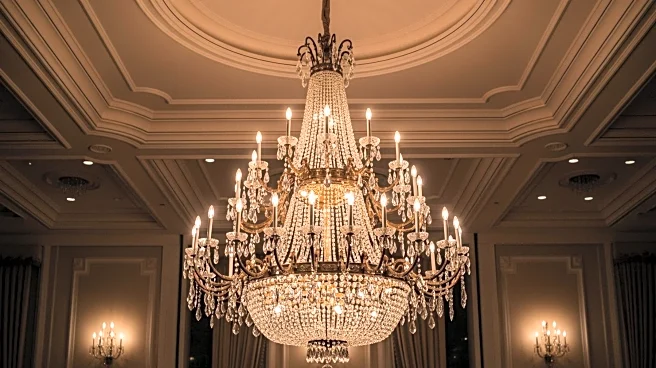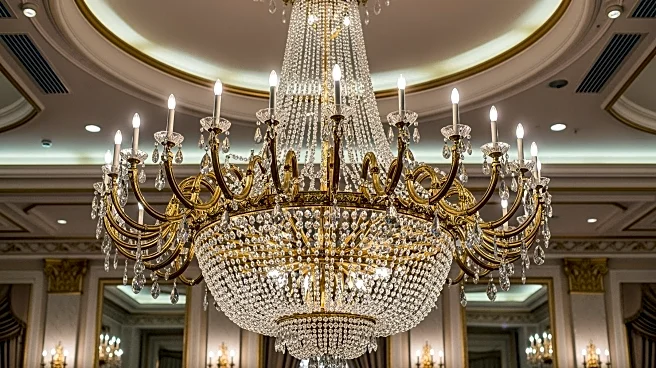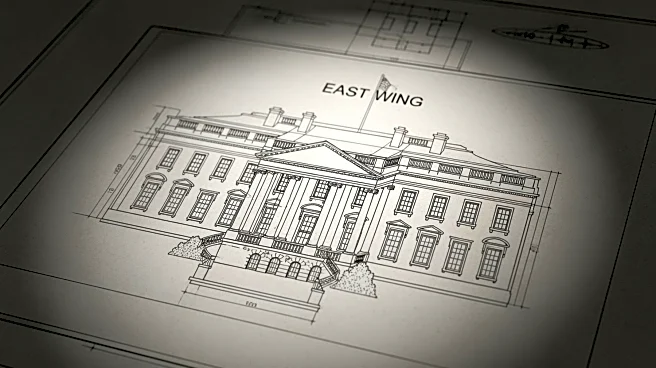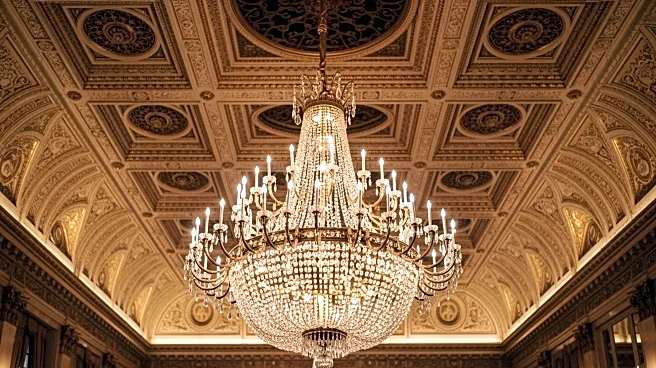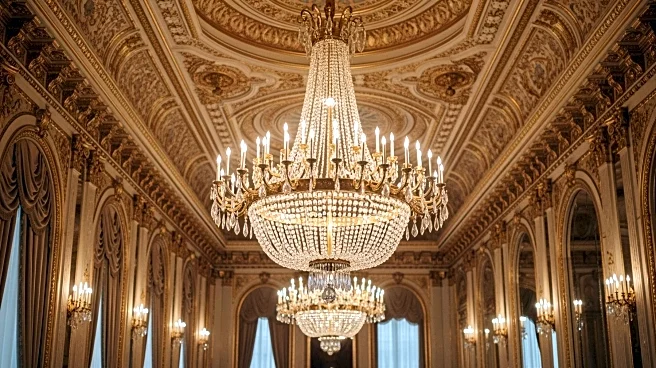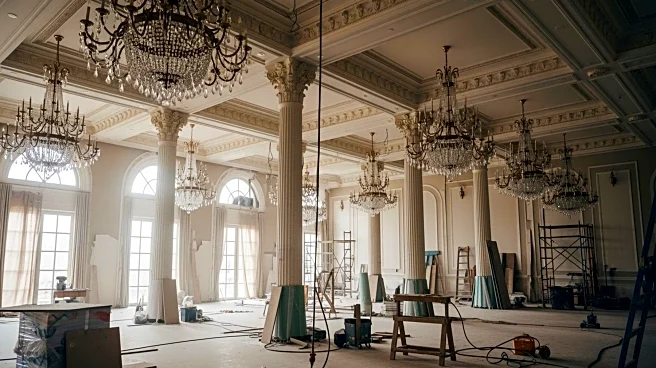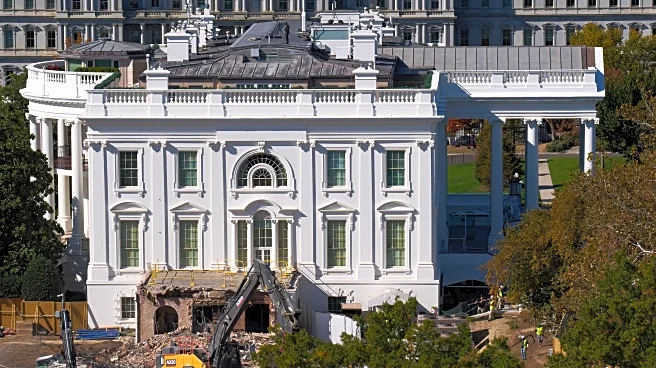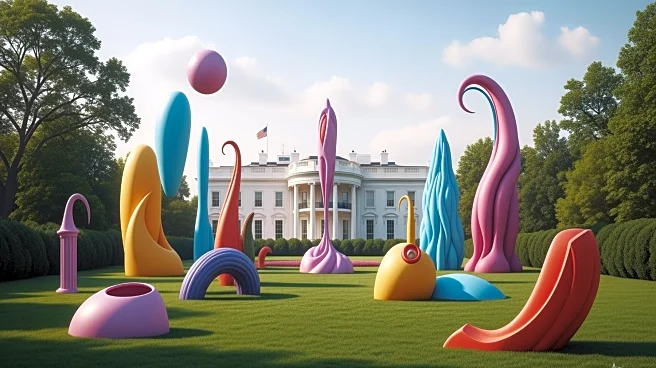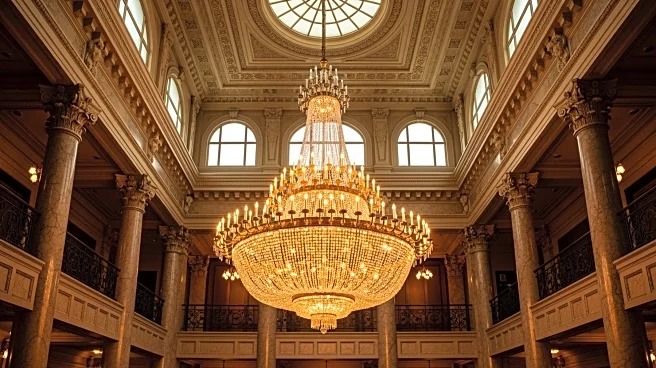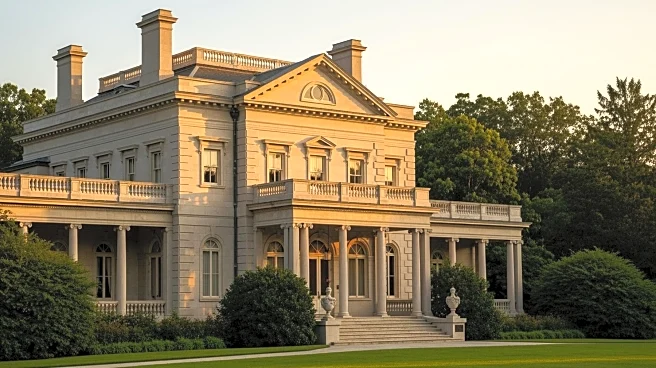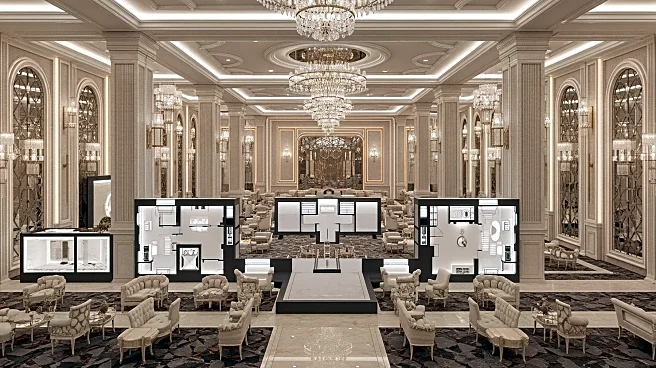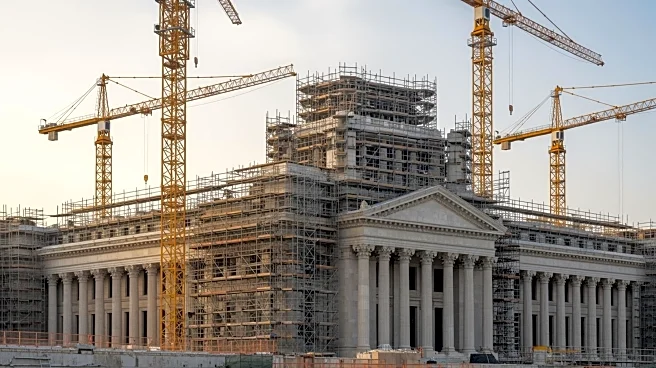What's Happening?
President Donald Trump has refuted claims that he intends to name the new White House ballroom after himself, labeling such reports as 'fake news.' The construction of the new ballroom follows the demolition of the East Wing, which previously housed the first
lady's offices. The new ballroom, which is expected to accommodate up to 650 people, has sparked controversy among lawmakers. Senate Minority Leader Chuck Schumer criticized the project as a 'vanity project,' while Trump defended the demolition, stating the East Wing was 'ready to be replaced.' The project, initially estimated at $200 million, has seen its budget increase to over $300 million, funded by private donors. The National Trust for Historic Preservation has expressed concerns about the project's impact on the White House's historical integrity.
Why It's Important?
The construction of the new ballroom at the White House has significant implications for historical preservation and public perception of presidential priorities. Critics argue that the project reflects a disregard for historical norms and could set a precedent for future alterations to national landmarks without public consultation. The funding of the project by private donors raises questions about potential conflicts of interest and the influence of corporate contributions on public projects. The controversy highlights the tension between modernization and preservation, as well as the political ramifications of large-scale projects initiated by sitting presidents.
What's Next?
The completion date for the new ballroom has not been announced, leaving the public and political figures to speculate on its eventual reception. The ongoing debate may influence future discussions on the balance between modernization and preservation of national landmarks. The project could also prompt legislative or regulatory changes regarding the approval process for significant alterations to historically significant buildings.
